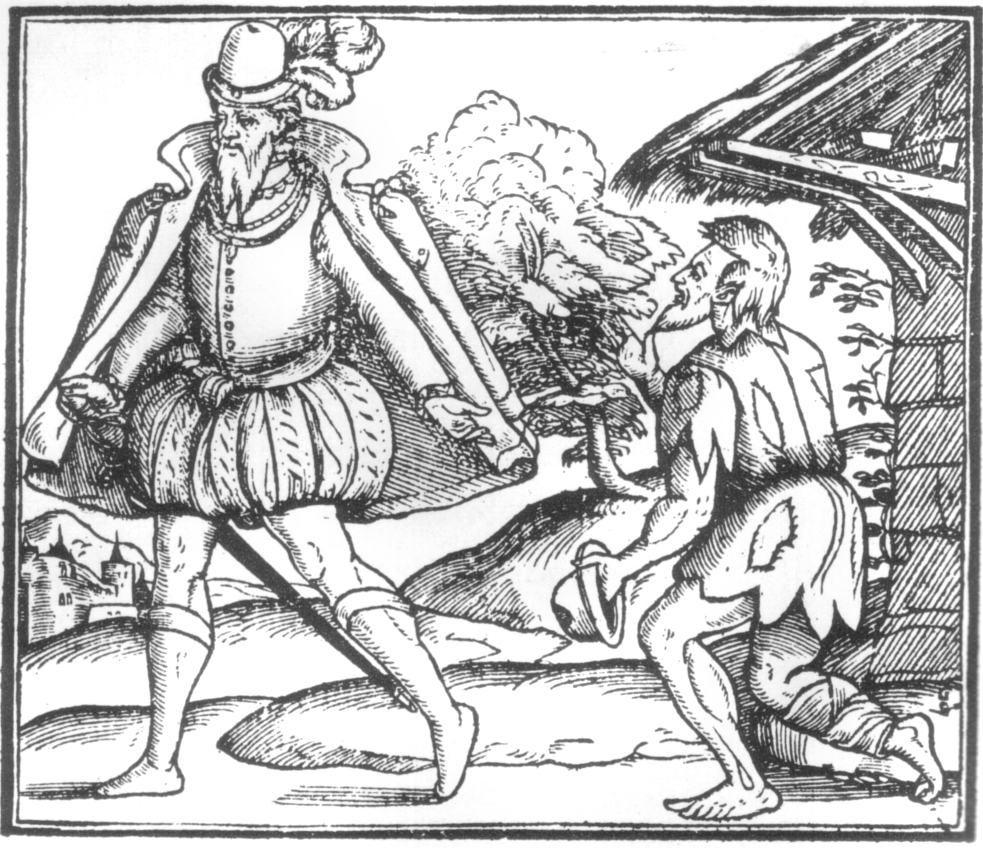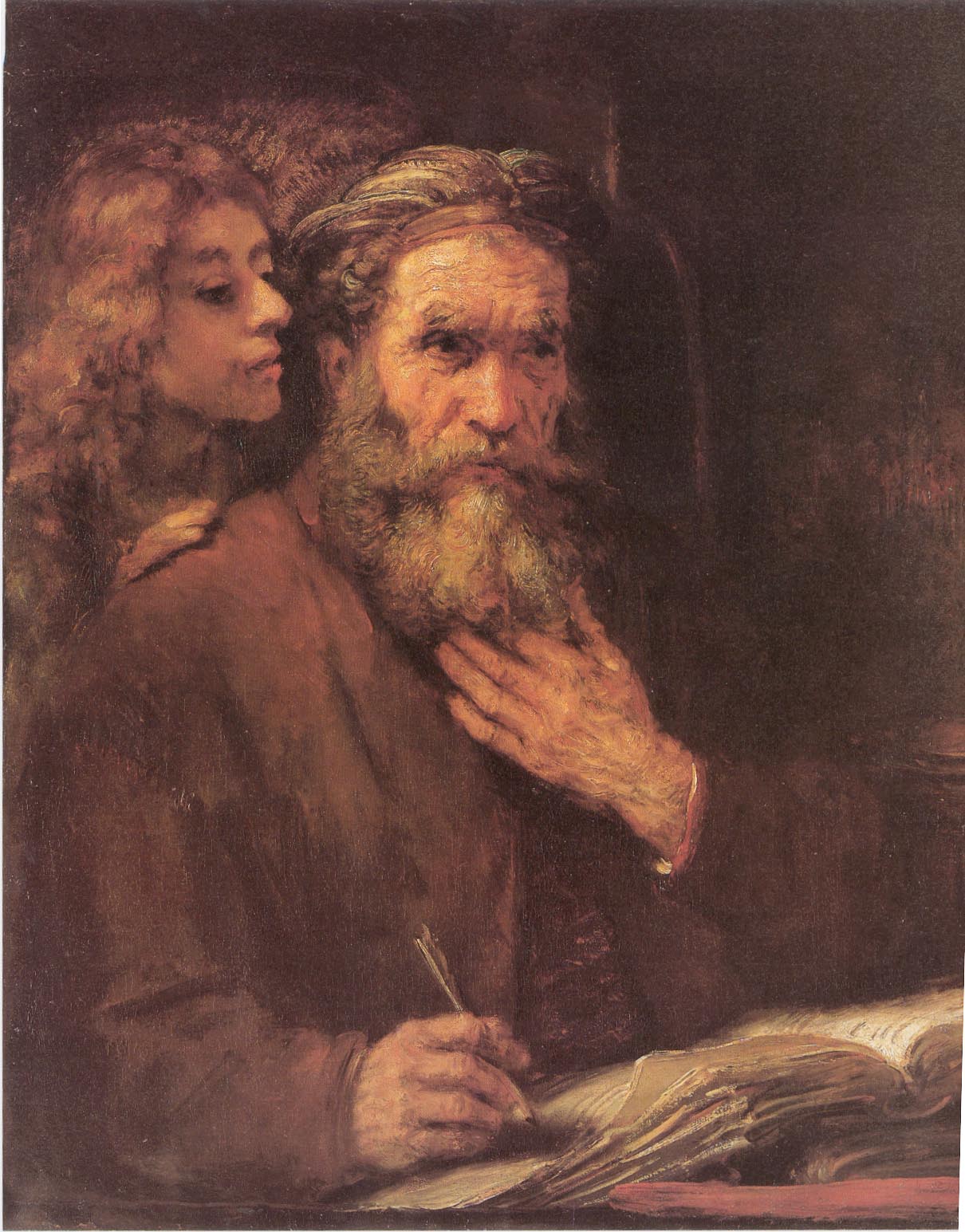|
Beggars
Begging (also known in North America as panhandling) is the practice of imploring others to grant a favor, often a gift of money, with little or no expectation of reciprocation. A person doing such is called a beggar or panhandler. Beggars may operate in public places such as transport routes, urban parks, and markets. Besides money, they may also ask for food, drink, cigarettes or other small items. Internet begging is the modern practice of asking people to give money to others via the Internet, rather than in person. Internet begging may encompass requests for help meeting basic needs such as medical care and shelter, as well as requests for people to pay for vacations, school trips, and other things that the beggar wants but cannot ostensibly afford. Beggars differ from religious mendicants in that some mendicants do not ask for money. Their subsistence is reciprocated by providing society with various forms of religious service, moral education, and preservation of ... [...More Info...] [...Related Items...] OR: [Wikipedia] [Google] [Baidu] |
The Beggar's Opera
''The Beggar's Opera'' is a ballad opera in three acts written in 1728 by John Gay with music arranged by Johann Christoph Pepusch. It is one of the watershed plays in Augustan drama and is the only example of the once thriving genre of satirical ballad opera to remain popular today. Ballad operas were satiric musical plays that used some of the conventions of opera, but without recitative. The lyrics of the airs in the piece are set to popular broadside ballads, opera arias, church hymns and folk tunes of the time. ''The Beggar's Opera'' premiered at the Lincoln's Inn Fields Theatre on 29 January 1728 and ran for 62 consecutive performances, the second-longest run in theatre history up to that time (after 146 performances of Robert Cambert's '' Pomone'' in Paris in 1671). The work became Gay's greatest success and has been played ever since; it has been called "the most popular play of the eighteenth century". In 1920, ''The Beggar's Opera'' began a revival run of 1,463 p ... [...More Info...] [...Related Items...] OR: [Wikipedia] [Google] [Baidu] |
Internet Begging
Internet begging, cyber-begging, e-begging or Internet panhandling is the online version of traditional begging, asking strangers for money to meet basic needs such as food and shelter. Internet begging among strangers differs from street begging in that it can be practiced with relative anonymity, thereby eliminating or reducing the shame and disgrace apparent of begging in public. Internet begging is also commonly done among acquaintances on social media platforms, such as requests for donations from friends and family members to pay for normal educational expenses. A cause website is a cyber-begging site that presents a personal appeal for funds or help. History During the early days of the Internet, cyber-begging was evident in the form of personal advertisements for help on local bulletin board systems (BBS). As personal websites became more popular, individuals began advertising their needs using the features available through website authoring. Many Internet service provi ... [...More Info...] [...Related Items...] OR: [Wikipedia] [Google] [Baidu] |
Thomas Harman
Thomas Harman ( ''fl.'' 1567) was an English writer best known for his seminal work on beggars, '' A Caveat or Warning for Common Cursitors''. Life He was the grandson of Henry Harman, clerk of the crown under Henry VII, who obtained, around 1480, the estates of Ellam and Maystreet in Kent. Thomas's father, William Harman, added to these estates the manor of Mayton or Maxton in the same county. As his father's heir, Thomas inherited all this property, and lived at Crayford, Kent, continuously from 1547. That he was a member of the gentry is evidenced by the coat of arms stamped on his pewter plate and he appears to have been a local Commissioner of the Peace. As a magistrate, he was responsible for implementing the new laws against beggary enacted by Henry VIII. He writes that he was "a poore gentleman", detained in the country by ill-health. He found some recreation in questioning the vagrants who begged at his door as to their modes of life and paid frequent visits to London w ... [...More Info...] [...Related Items...] OR: [Wikipedia] [Google] [Baidu] |
Poor Law
In English and British history, poor relief refers to government and ecclesiastical action to relieve poverty. Over the centuries, various authorities have needed to decide whose poverty deserves relief and also who should bear the cost of helping the poor. Alongside ever-changing attitudes towards poverty, many methods have been attempted to answer these questions. Since the early 16th century legislation on poverty enacted by the Parliament of England, poor relief has developed from being little more than a systematic means of punishment into a complex system of government-funded support and protection, especially following the creation in the 1940s of the welfare state. Tudor era In the late 15th century, Parliament took action on the growing problem of poverty, focusing on punishing people for being " vagabonds" and for begging. In 1495, during the reign of King Henry VII, Parliament enacted the Vagabonds and Beggars Act 1494. This provided for officers of the law to ... [...More Info...] [...Related Items...] OR: [Wikipedia] [Google] [Baidu] |
Bampfylde Moore Carew
Bampfylde Moore Carew (1690-1758) was an English rogue, vagabond and impostor, who claimed to be King of the Beggars. Life Baptized at Bickleigh, Devon, on 23 September 1690, Bampfylde Moore Carew was the son of Reverend Theodore Carew, rector of Bickleigh. The Carews were a well-established Devonshire family. Although they had a reputation for adventurousness, Bampfylde Moore Carew took this to extremes, if his picaresque memoirs are to be believed. Little is known about his life beyond these, in which he is described on the title-page as ''"the Noted Devonshire Stroller and Dogstealer"''. ''The Life and Adventures of Bampfylde Moore Carew'' Literary history ''The Life and Adventures of Bampfylde Moore Carew'' was first published in 1745. Although it states that the contents were "noted by himself during his passage to America" and it is likely that facts were supplied by Carew, the author was probably Robert Goadby, a printer in Sherborne, Dorset, who published an early ... [...More Info...] [...Related Items...] OR: [Wikipedia] [Google] [Baidu] |
Mendicant
A mendicant (from , "begging") is one who practices mendicancy, relying chiefly or exclusively on alms to survive. In principle, Mendicant orders, mendicant religious orders own little property, either individually or collectively, and in many instances members have taken a vow of poverty, in order that all their time and energy could be expended on practicing their respective faith, missionary, preaching and serving society. Mendicancy is a form of asceticism, especially in Western Christianity. In Eastern Christianity, some ascetics are referred to as Fools for Christ, whereby they spurn the convention of society in pursuit of living a more wholly Christian life. Religious practice Many religious orders adhere to a mendicant way of life, including the Catholicism, Catholic mendicant orders, Hindu ascetics, some Sufi dervishes of Islam, and the monastic orders of Jainism and Buddhism. While mendicants are the original type of monks in Buddhism and have a long history in Indian ... [...More Info...] [...Related Items...] OR: [Wikipedia] [Google] [Baidu] |
Rich Man And Lazarus
The rich man and Lazarus (also called the parable of Dives and Lazarus) is a parable of Jesus from the 16th chapter of the Gospel of Luke. Speaking to his disciples and some Pharisees, Jesus tells of an unnamed rich man and a beggar named Lazarus. When both die, the rich man goes to Hades and implores Abraham to send Lazarus from his bosom to warn the rich man's family from sharing his fate. Abraham replies, "If they do not listen to Moses and the Prophets, they will not be convinced even if someone rises from the dead." Along with the parables of the Ten Virgins, Prodigal Son, and Good Samaritan, the rich man and Lazarus was one of the most frequently illustrated parables in medieval art, perhaps because of its vivid account of an afterlife. Text Interpretations There are different views on the historicity and origin of the story of the Rich Man and Lazarus. The story is unique to Luke and is not thought to come from the hypothetical Q document. As a literal histo ... [...More Info...] [...Related Items...] OR: [Wikipedia] [Google] [Baidu] |
Woman Begging
A woman is an adult female human. Before adulthood, a female child or adolescent is referred to as a girl. Typically, women are of the female sex and inherit a pair of X chromosomes, one from each parent, and women with functional uteruses are capable of pregnancy and giving birth from puberty until menopause. More generally, sex differentiation of the female fetus is governed by the lack of a present, or functioning, ''SRY'' gene on either one of the respective sex chromosomes. Female anatomy is distinguished from male anatomy by the female reproductive system, which includes the ovaries, fallopian tubes, uterus, vagina, and vulva. An adult woman generally has a wider pelvis, broader hips, and larger breasts than an adult man. These characteristics facilitate childbirth and breastfeeding. Women typically have less facial and other body hair, have a higher body fat composition, and are on average shorter and less muscular than men. Throughout human history, traditional ge ... [...More Info...] [...Related Items...] OR: [Wikipedia] [Google] [Baidu] |
New Testament
The New Testament (NT) is the second division of the Christian biblical canon. It discusses the teachings and person of Jesus in Christianity, Jesus, as well as events relating to Christianity in the 1st century, first-century Christianity. The New Testament's background, the first division of the Christian Bible, is called the Old Testament, which is based primarily upon the Hebrew Bible; together they are regarded as Sacred Scripture by Christians. The New Testament is a collection of 27 Christianity, Christian texts written in Koine Greek by various authors, forming the second major division of the Christian Bible. It includes four Gospel, gospels, the Acts of the Apostles, epistles attributed to Paul the Apostle, Paul and other authors, and the Book of Revelation. The Development of the New Testament canon, New Testament canon developed gradually over the first few centuries of Christianity through a complex process of debate, rejection of Heresy, heretical texts, and ... [...More Info...] [...Related Items...] OR: [Wikipedia] [Google] [Baidu] |




